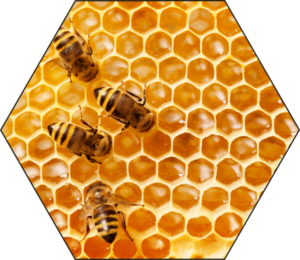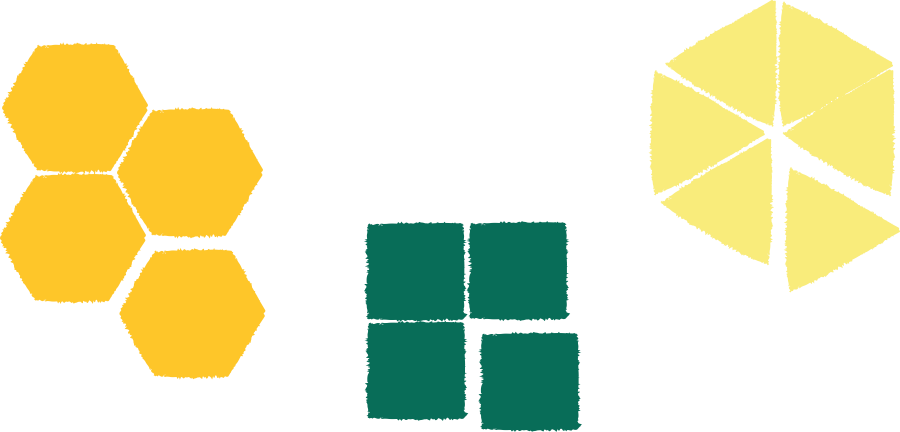Surely you have noticed in nature how many geometric shapes nature creates. For example, the spiral of snails, the body of a starfish or the symmetry of petals – these are all mathematically perfect natural models!
Very often we see hexagons in nature: honeycombs are a common example, but certainly not the only ones. Basalt columns, crystals and insect eyes also form hexagonal patterns. But what makes hexagons so special?
Do you know what this is?

(Pineapple)
Do you know that …
if an equilateral triangle, square, or regular hexagon have the same area, then the smallest perimeter has a regular hexagon?
This property is used especially by bees to construct honeycombs. In this way, they spend less work than building triangular honeycombs, for example.
Bees build round cells, but their body heat dissolves the wax, resulting in hexagons.
Bee builders
Bees place growing larvae in wax combs and store honey and pollen in them. The hexagonal shape is ideal because the individual hexagons fit perfectly together, thanks to which the space is used to the maximum and the wax is consumed minimally. Overall, this shape is incredibly strong, because any movement inside the honeycomb (e.g. the movement of bees) or on its surface (e.g. wind) is evenly distributed over the entire shape.

Did you know that the only regular n-gons from which a mosaic can be built (a filled part of a plane in which there are no gaps) are a triangle, a square and a hexagon?






